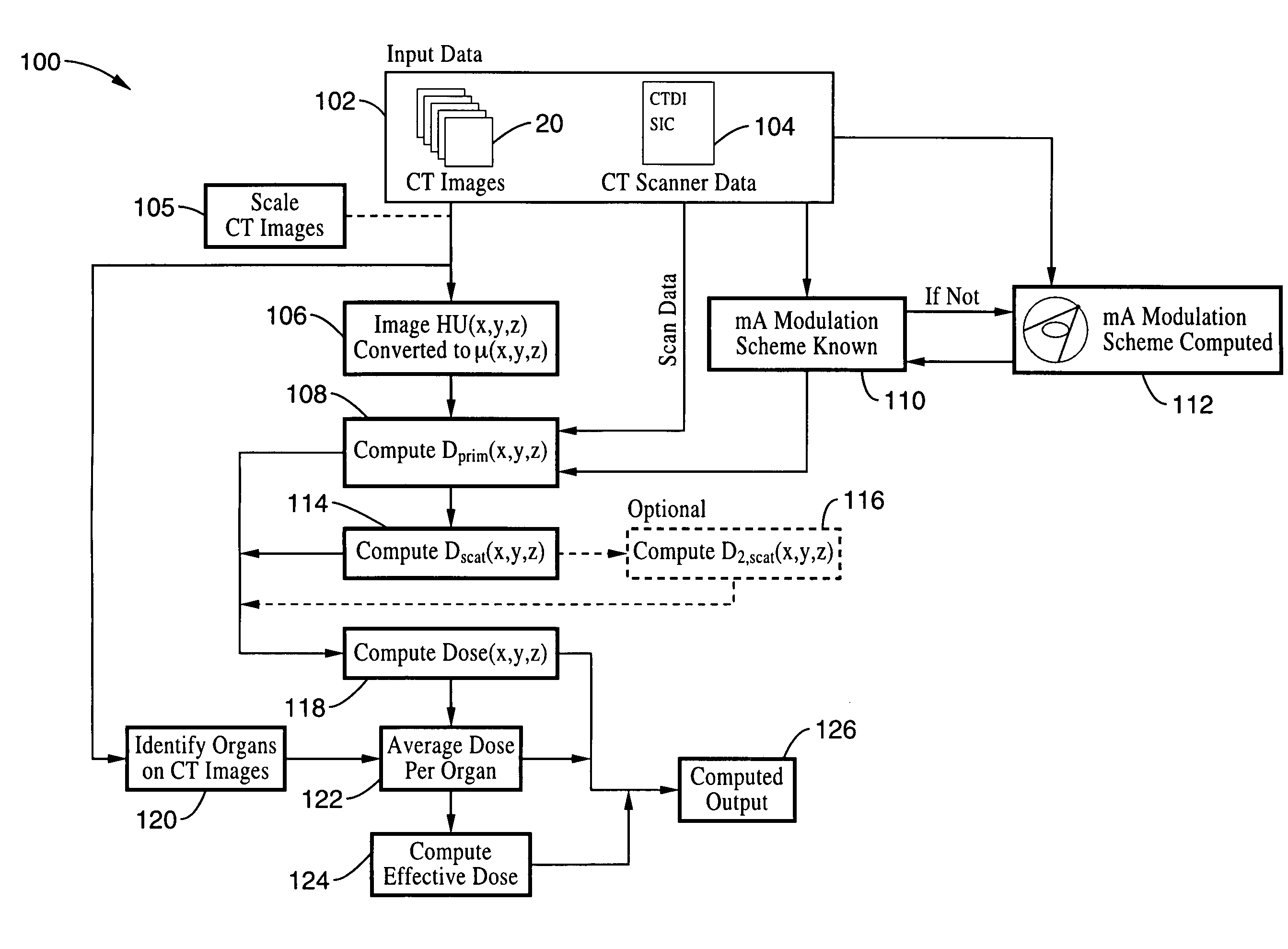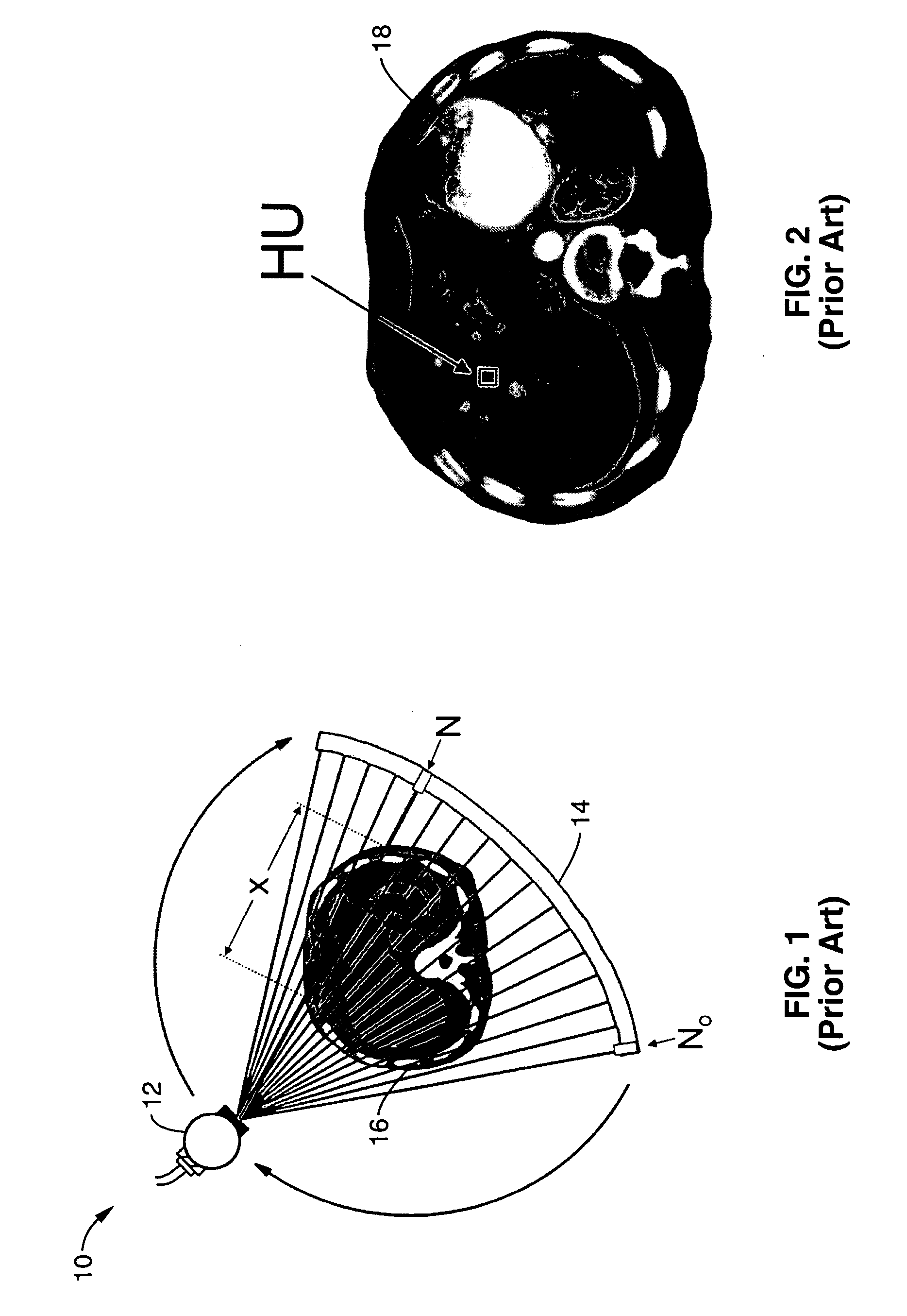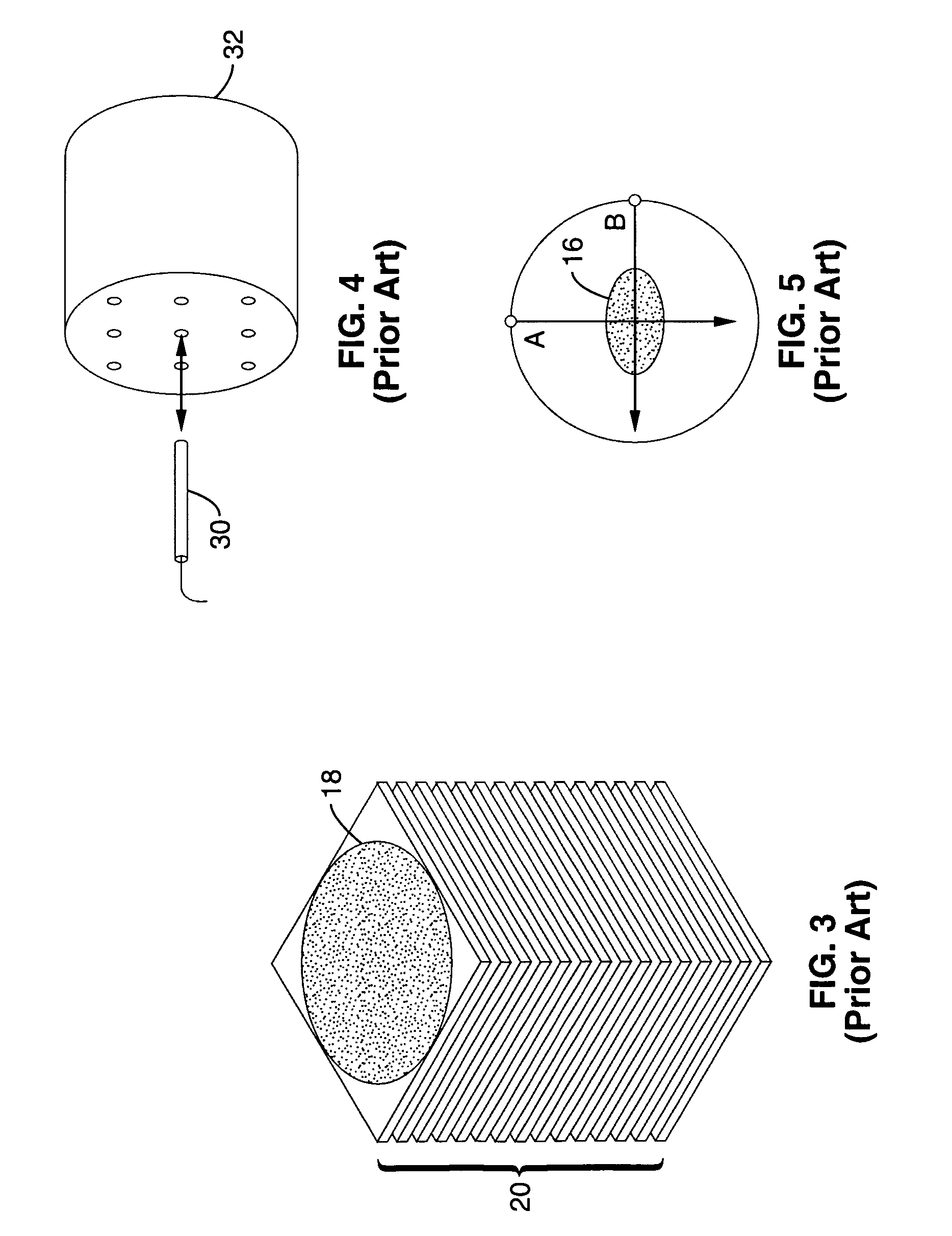Method for computing patient radiation dose in computed tomography
a computed tomography and radiation dose technology, applied in the direction of material analysis using wave/particle radiation, instruments, nuclear engineering, etc., can solve the problems of not being able to address ct dosimetry techniques, handling current scanner technology, and current ct dosimetry standards typically underestimate the radiation dose to the patien
- Summary
- Abstract
- Description
- Claims
- Application Information
AI Technical Summary
Benefits of technology
Problems solved by technology
Method used
Image
Examples
Embodiment Construction
[0071]Referring more specifically to the drawings, for illustrative purposes the present invention is embodied in the apparatus generally shown in FIG. 7 through FIG. 13. It will be appreciated that the apparatus may vary as to configuration and as to details of the parts, and that the method may vary as to the specific steps and sequence, without departing from the basic concepts as disclosed herein.
[0072]FIG. 7 illustrates the geometry for the image based CT dose calculation. The outer circle 50 is the path of the x-ray source 12 around the patient 16 (radius=source 12 to isocenter 52 distance, SIC), and locations P1 and Pk are indicated but there is a complete circular output. The gray block 58 intercepting the x-ray beam 56 represents a bow tie filter. The primary radiation dose to the patient at a location (x,y,z) is indicated at location Dprim(x,y,z).
[0073]The image data set in CT is related to the linear attenuation coefficient (LAC), and it is also an accurate geometrical de...
PUM
 Login to View More
Login to View More Abstract
Description
Claims
Application Information
 Login to View More
Login to View More - R&D
- Intellectual Property
- Life Sciences
- Materials
- Tech Scout
- Unparalleled Data Quality
- Higher Quality Content
- 60% Fewer Hallucinations
Browse by: Latest US Patents, China's latest patents, Technical Efficacy Thesaurus, Application Domain, Technology Topic, Popular Technical Reports.
© 2025 PatSnap. All rights reserved.Legal|Privacy policy|Modern Slavery Act Transparency Statement|Sitemap|About US| Contact US: help@patsnap.com



